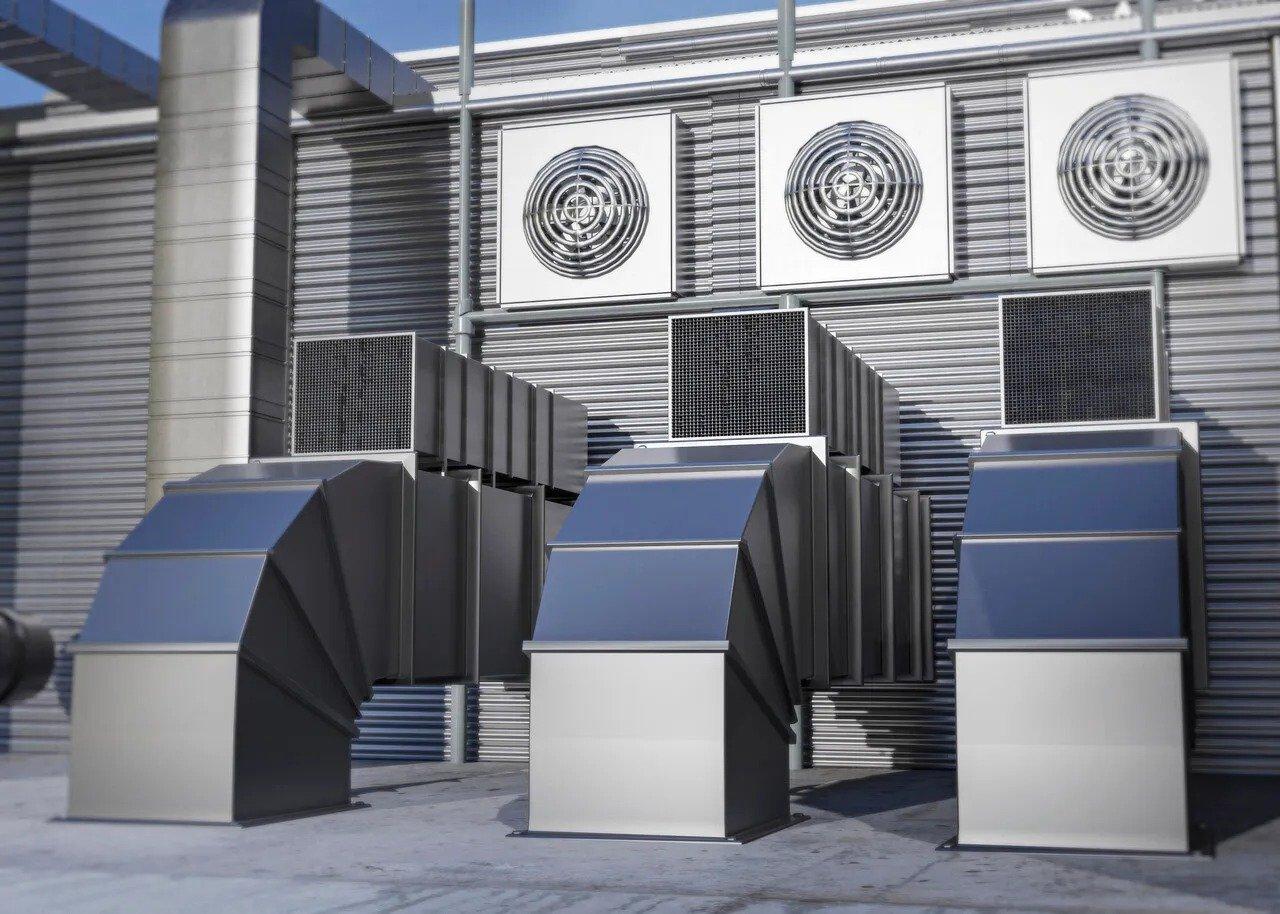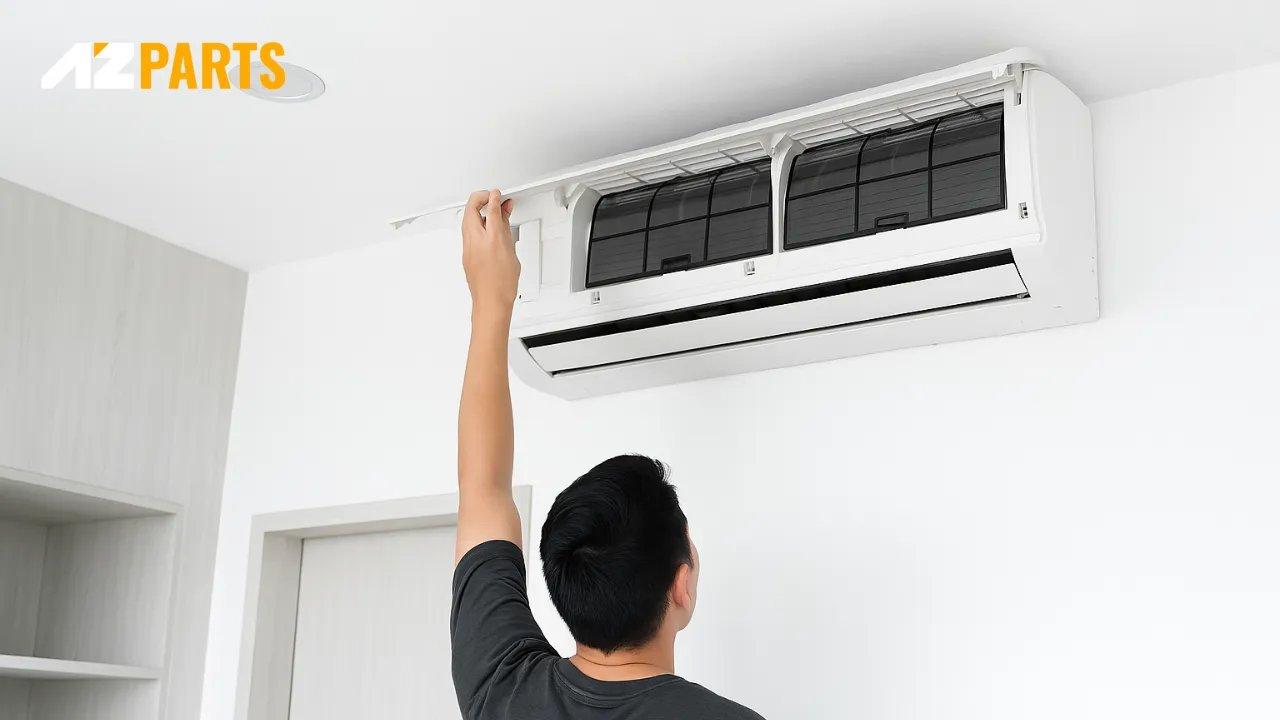Other
How Does a Central Air Conditioner Work in a House?
AZparts Team
Updated on July 11, 2025
6 min read
Understanding how central air works is the first step to keeping your home comfortable year-round. In this guide, AZParts breaks down what a central air conditioning system is, how its main components work together, and what makes each AC type different. You’ll also find clear answers to common homeowner questions to help you run your cooling system efficiently and confidently.

1. What is a Central Air Conditioning System?
A central air conditioning system is a whole-home cooling solution that works through a network of key parts. It usually includes a thermostat, an outdoor unit with a fan, condenser coil, and compressor, and an indoor unit with an evaporator coil and fan. Copper tubing connects these AC parts, while an expansion valve controls refrigerant flow. Ductwork distributes the cooled air throughout your home and recirculates warm air back to the system.
In simple terms, the system cools warm indoor air by absorbing its heat inside the house, then releases that heat outside. This cycle keeps your indoor spaces comfortably cool and removes excess humidity.
Central AC system includes several parts (Source: AZParts)
2. How Each Component of a Central AC System Works Together?
A central AC system relies on multiple parts working in sync to cool your home efficiently. Here's how the process flows, step by step:
- The thermostat detects that the indoor temperature is too high and signals the AC system to turn on. At this stage, AC capacitors provide the electrical boost needed to start the compressor and fan motors efficiently, ensuring the system kicks in smoothly.
If you need a reliable AC capacitor to ensure your compressor and fan motors start smoothly every time, check out options from AZParts. - The indoor unit’s fan pulls warm air from the house through return air ducts and passes it through air filters that trap dust and debris.
- The filtered air then flows over the cold evaporator coil, where heat is absorbed into the refrigerant as it changes from liquid to gas—cooling the air.
- The blower fan pushes the chilled air back through the ductwork to cool the living spaces.
- The refrigerant gas exits the indoor unit through copper tubing and heads to the outdoor unit. Technicians may use an AC piercing valve at this point in the line during maintenance to access the refrigerant without permanent modifications.
If you’re looking for a handy tool to access refrigerant lines safely during maintenance, consider using a piercing valve from AZParts. - The compressor pressurizes the refrigerant gas, increasing its temperature and sending it to the condenser coil.
- The outdoor fan pulls in outside air to cool the hot refrigerant, releasing heat from your home into the atmosphere.
- The refrigerant, now a liquid again, returns indoors through an expansion valve that controls its flow into the evaporator coil.
- The cycle repeats, continuously removing heat and humidity to keep your home cool and comfortable.
Each AC parts works together to cool your home (Source: Freepik)
3. How Different Types Of Air Conditioners Work?
Before choosing a cooling system for your home, it’s helpful to understand how different types of air conditioners operate. Here’s a quick breakdown to help you decide which one fits your needs best:
3.1. Split System Air Conditioner
A split system is the most common type of central air conditioner. It has two main parts: an indoor unit (with the evaporator coil and blower fan) and an outdoor unit (with the compressor and condenser coil).
This setup delivers reliable, even cooling throughout your home. Split systems come in different levels of efficiency, from simple single-stage models to quieter two-stage and advanced inverter systems. Plus, the indoor unit’s filters help clean your air while keeping it cool.
Split system AC comes in different levels of efficiency (Source: AZParts)
3.2. Packaged AC System
A packaged AC system is an all-in-one cooling solution. Unlike split systems, all key parts, including the evaporator coil, blower fan, compressor, and condenser coil are housed together in a single outdoor unit. This makes them perfect for homes without space for an indoor unit or for rooftop installations.
Packaged systems pull warm air from your home, cool it inside the unit, and send the chilled air back through your ducts while releasing unwanted heat outside. They come in single-stage and two-stage options, with higher efficiency models offering multi-speed fans for better comfort.
3.3. Single-Stage vs. Two-Stage Air Conditioners
A single-stage AC runs at full power whenever it’s on, then shuts off when your home reaches the set temperature. It’s simple and affordable but can cause temperature swings and use more energy.
In contrast, a two-stage AC runs mostly on a lower setting, saving energy and keeping temperatures steadier. It can switch to high power on hot days for extra cooling, offering better comfort and efficiency.
Single-stage and two-stage AC are different (Source: AZParts)
3.4. Ductless AC System
A ductless AC system, also called a mini-split, cools your home without using ductwork. It has an outdoor unit and one or more indoor air handlers mounted on walls or ceilings. Each indoor unit cools a specific room or zone, allowing for personalized temperature control and energy savings. Ductless systems are ideal for older homes, room additions, or areas where installing ducts isn’t practical.
A ductless AC system has no duct (Source: AZParts)
4. FAQs about How Does a Central Air Conditioner Work
Curious about how central air conditioning really works in your home? Here are some quick answers to common questions to help clear things up:
4.1. Does AC take Air from Outside?
No, a central AC system mostly recirculates indoor air. It pulls warm air from inside, cools it down, and sends it back into your rooms. It doesn’t bring in outside air except for some systems with a fresh air intake.
4.2. Is it Cheaper to Leave the AC on All Day?
Generally, no. It’s more cost-effective to use a programmable thermostat to cool your home only when needed. Running your AC all day can waste energy and raise your utility bills.
4.3. How Does an AC Cool a Room?
Your AC absorbs heat from the indoor air through the evaporator coil and releases it outside via the condenser coil. This cycle keeps removing heat and humidity, delivering cool, comfortable air back into your living spaces.
Understanding how central air works is key to keeping your home cool, comfortable, and energy-efficient year-round. From the thermostat to the compressor and ductwork, each part must work together smoothly. Routine checkups and replacing worn AC parts, like a port adapter or protective cover can help prevent breakdowns and costly repairs.
Need reliable parts for your next tune-up? AZParts has you covered with trusted, high-quality components to keep your system running at its best. Visit AZParts today!
Contact Information:
- Address: 8 The Green, Ste A, Dover, Delaware 19901-3618, United States
- Email: support@azparts.com
Air conditioner
Further Reading
Further Reading





